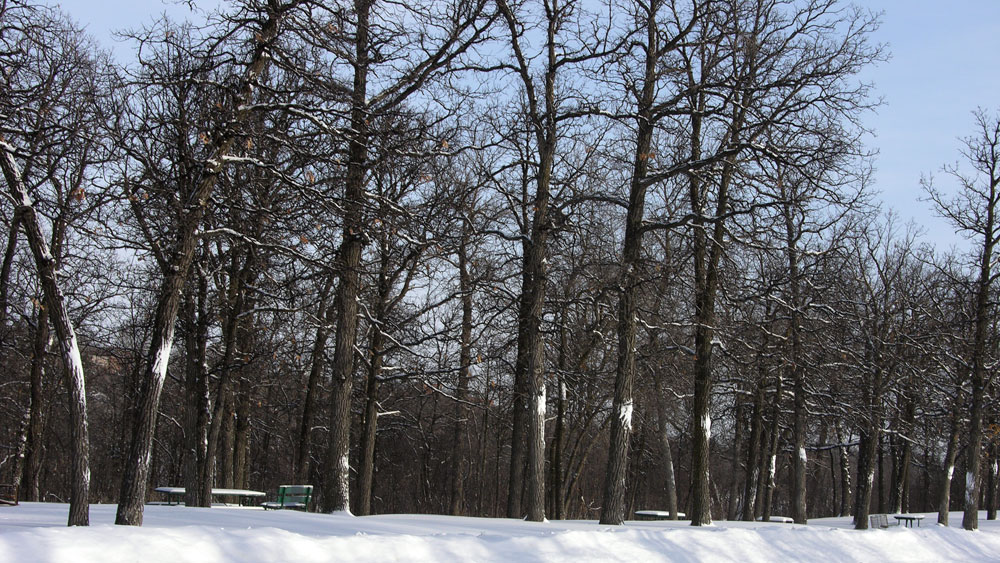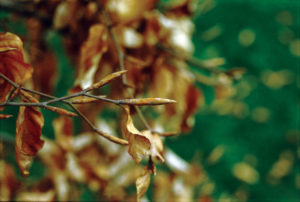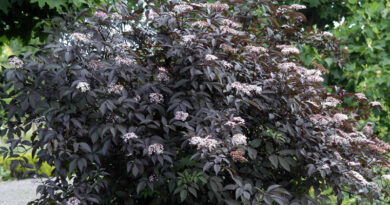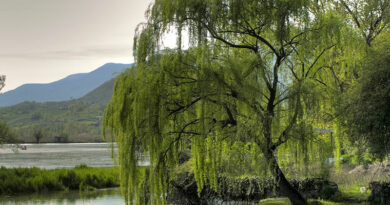How Trees Get By in Extreme Weather
by Dr John Worrall
Canada’s climate is far too extreme for growth in winter, though in the southwest British Columbian evergreen rainforest, photosynthesis can proceed in mild spells. For most of Canada, however, how do the above-ground parts of woody perennials cope with a Canadian winter?
Leaves
Deciduous trees drop their most sensitive and exposed organs, their leaves, and replace them with new ones each season. Still, their twigs need protection, as do the leaves in evergreen species. To survive, the tree produces its own sort of antifreeze, using sugars to stop water from freezing and rupturing precious plant tissue during the winter. This, combined with the export of water from live cells, results in a very low freezing point for trees. In mid-winter, depending on location and species, trees can tolerate temperatures of -40C or even lower.
Twigs and buds
Winter twigs have buds, usually with brown scales, which contain several embryonic leaves. But if the plant is old enough (10 to 15 years for most species) some of these buds will contain embryonic flowers, or “strobili” in the conifers. With a lot of luck, these will later form fruit or cones. But the buds wait will until they have experienced winter before growing.
This is why it’s no use to pick cherry twigs in December in the hopes of an indoor display of blossoms – the twigs are dormant and “know” it’s still winter. The buds are really just condensed shoots, containing all the information needed to produce leaves and new twig shoots next season. Some species expand whatever embryonic leaves are in the bud, and may produce more. Generally, shoot growth is over in a few weeks.
After winter the buds are still inactive. They would like to grow, but it is still too cold, and they must wait for warmth.
As spring approaches, the plant cells begin to divide and expand. Frost hardiness is reduced. A spring frost can prevent flowering and fruit production.
Spring leaves
The first leaves that grow in spring can be so bright that they are almost fluorescent green. The green pigment is chlorophyll. This pigment is easily destroyed by light, so it needs continual replacement. Yellow-orange carotenes assist in photosynthesis but the yellow is masked by the green and can only be seen in fall as chlorophyll production begins to diminish.
Throughout summer, the tree is busy photosynthesizing, promoting the growth of leaves, buds, wood and roots.
Fall colour

In September, the tree anticipates the approach of colder temperatures as the nights grow longer. Deciduous trees slow their growth, stop producing chlorophyll, drop their leaves and finally become dormant and frost hardy.
Aspen (Populus tremula) is the best example of a species whose leaves turn a clear butter-yellow. In some species, the leaf produces anthocyanin, a red pigment. Mixed with carotenes, this gives a range of colour from red to orange. Some species, like sweetgum (Liquidambar styraciflua) and some of the ashes, produce anthocyanin before the chlorophyll level is reduced, and so red, yellow and green pigments mix to produce a deep purple leaf.
*From Canadian Trees Summer 2008







Pingback: How to prevent and deal with winter burn on evergreens - Your LOCAL Gardener